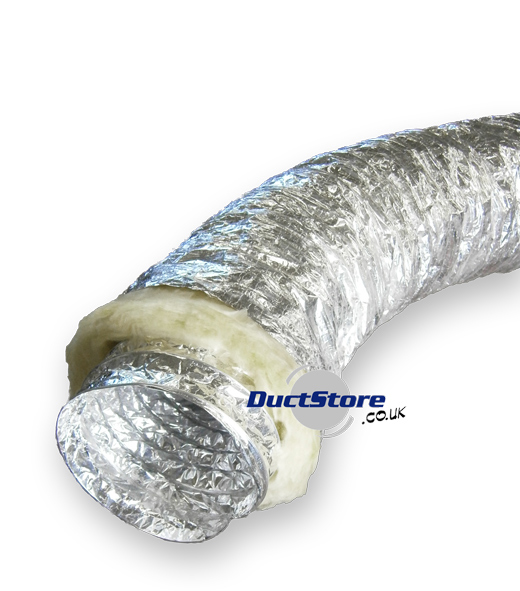
Tecsonic 400 is a high quality fully flexible acoustic
ducting. It is ideal for use in low and medium
pressure ventilation and air conditioning systems
where attenuation of duct borne noise is required.
Construction
Tecsonic 400 acoustic flexible ducting is
manufactured with an inner core constructed from a
multi-ply aluminium and polyester laminate to
provide a tough yet highly flexible core. This fabric is
supported by an encapsulated high tensile steel wire
helix at 35mm pitch. The core is continuously
perforated with micro perforations to enhance the
acoustic performance of Tecsonic 400 whilst virtually
eliminating the possibility of fibre migration. This
core is wrapped in a 25mm thick high density
fibreglass blanket which is overlapped to ensure
continuity of thermal and acoustic performance. This
insulation material is then covered by a tough scruff
resistant, reinforced aluminium fabric acting as the
outer jacket and air containing membrane.
This construction results in a highly flexible duct in
which bends of 1/2D radius can be produced.
Specification
Acoustic flexible ducting for joints or connections
shall be TECSONIC 400. It shall be manufactured
with an aluminium/polyester inner core continuously
perforated and wrapped with an overlapped
fibreglass blanket covered by a tough aluminium
fabric jacket.
Packaging
Tecsonic 400 is supplied, as standard, in 10 metre
lengths. Each length is individually cartoned and
labelled. Storage space required is kept to a
minimum with a 10 metre length being compressed
to 1150mm.
Technical Data
Diameter Range : 100mm to 500mm
Temperature Range : From -30ºC to +120ºC
Air Velocity : 15 m/s maximum
Working Pressure : 1000 Pa maximum
Fibreglass : 25mm thk. 16Kg/m3 density
Outer Jacket : Scuff resistant reinforced
aluminium laminate fabric
Colour : Metallic silver
Standard Length : 10 metres
Installation
Fully extend ducting, then cut to exact length
required using a sharp knife and pliers. Pull back
fibreglass insulation and tape the inner core to the
spigot. Then tape and clamp the outer jacket and
inner core to the spigot.